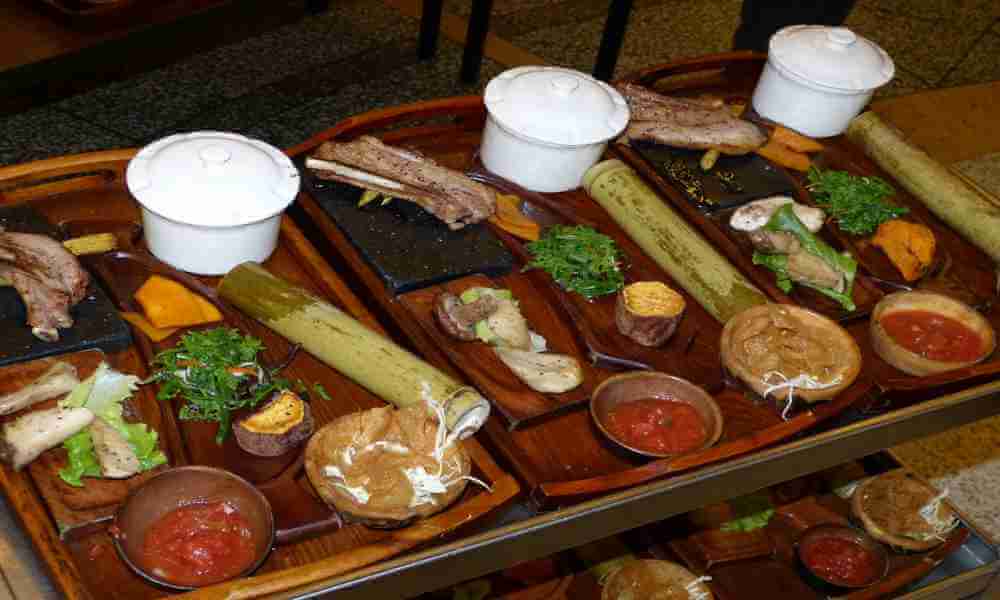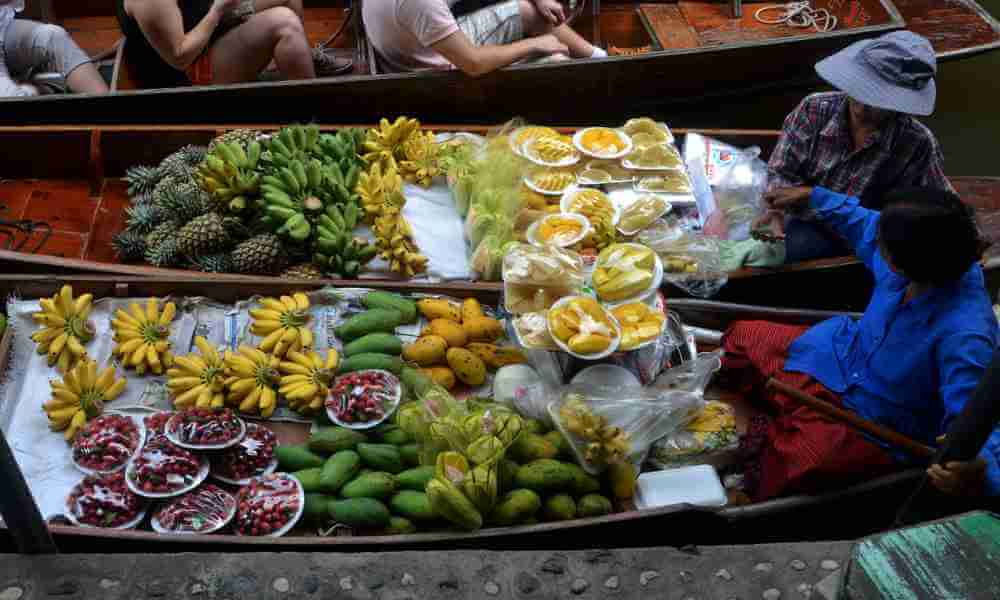Cuisine tourism: Food constituents a vital portion of historical culture & heritage of a destination and country. Therefore, from the goals of sustainable tourism development (which is regarded as of prime importance for Tourism authorities like UNWTO) the preservation & progression of regional/domestic cuisine is required. Cuisine means the variety of foods & beverages. Every particular destination has some special & authentic offerings in their foods & beverages section. This speciality of such destinations in their offerings of food & beverages in the form of cuisine should be exploited in a meaningful manner which would result into leveraging speciality factor to that particular destinations.
The part of food during a trip can be seen as the core desirability which is supportive involved in the growth of the daily life. The investigator specified that high standing is to be given or food should be acknowledged as the main sightseer’s activity. The researchers further suggested that the authorities & local public should take effective steps to develop charms including cuisines at the holiday destination (Quan & Wang, 2004).
Food nowadays has been recognised as:
• The element of the provincial ethos and values which explorers consume.
• Element of vacationer advertising;
• The elementary part in the regional, rural & economic growth of a destination in particular.
• Element of the native coefficient which is inclined by the feeding habits and affectations of the travellers.
The importance of food as an integral part in every holiday/ destination can be understood by the fact that travellers spend around 40% of their holiday budget on food (Boyne, Hall & Williams, 2002). According to Graziani (2004) Nowadays hotels create 50% of their income through tourists and these facts are constantly increasing towards
70% benchmarks. These evidence specified the connection & effect amid food & the tourism sector (Karim, 2006). Karim (2006) further stated that the increasing demand and supply of regional food resulted into a new sector in tourism as “local food”. Countries like Italy, Thailand and France had benefited a lot by marketing their local cuisines at national & international levels. Furthermore, such sustenance has been recognized as a well-organized promotion and marketing tool for a province (Hjalager & Richards, 2002).
Numerous scholars argued that cuisine (food) tourism should be best integrated with Culinary tourism. However, Culinary tourism is regarded as the broader classification of cuisine tourism. Culinary tourism is a comprehensive cataloguing which involves the activities of cuisine, lifestyle, regionalism, environment, rurality and health in it.

What is Culinary Tourism?
Culinary tourism comprises a huge diversity of actions such as food centenaries, cyclical crops, agronomist’s bazaars, cookery institutes, coffee tasting, farmhouse vacations which are primarily established for visitors and domestic trekkers (Deneault, 2002).
It embraces any travel experience in which an individual study about, appreciate, consumers o food and drinks that replicates the native food, tradition, or philosophy of a place. Culinary tourism is not restricted to epicurean diet. It is about what is exclusive, unique and unforgettable about the sustenance stories the provinces/destination have to tell. For such purpose the native experiences from local people like farmers, fishers, bakers, gardeners, winemakers and everyone in between is counted.
Culinary tourism is defined as the quest of unique and memorable eating and drinking experiences. By combining travel with these eatable experiences, food leisure industry offers both locals and tourists identical true palate of place in the generous sphere.
According to Smith (2007) culinary tourism as “tourism trips during which the purchase or consumption of regional food (including drinks), or the observation and study of food production represent a significant motivation or activity. Culinary tourism concerns the self-aware and mindful interest in experiencing a destination through its foods.”
Considering the above aspects, the culinary tourism is mainly depended on its cuisine & its multiple varieties. From the preview of cuisine, Culinary tourism means to travel with the interest in food has many known names in the tourism sector. The most used names are food tourism, culinary tourism, food and wine tourism, food and beverage tourism, gastronomy tourism, rural tourism, cuisine travel, cuisine tourism, gourmet tourism, and taste tourism, which all contain the idea of travelling to experience and taste the local food products (Henderson, 2004). It remarks the worth of food making & feeding and so the variety of places where culinary foodstuffs can be bought and experienced (Mason & O’Mahony 2007).
Tourism is backed up by the wish of travellers to experience one’s own culture and to seek for contact with other cultures (Robinson, 1999) where food and beverages play a leading role in the culture, exclusivity and identity of a destination. Food & beverages this could be argued to be one of the main reasons why the interest in food and wine tourism is growing (Telfer & Hashimoto 2003).
Another hint that shows that the interest in cuisine experiences is increasing is the huge number of food, wine and travel magazines. It also includes the high number of TV channels orientation towards cooking shows and food habits in all the countries available in many languages (Telfer & Hashimoto 2003). Now a day there is increasing trend of the food journalists, food channels and famous chefs influence the population, food based competitions in such a way that even what, where, when, how and why they should eat is told (Bell & Valentine, 1997).
You may like to read this book
Buy Now
Types of Culinary Travelers
Murray (2011) further classified such culinary tourist into three wide clusters namely: primary, secondary and tertiary.
Primary travellers: Who are food enthusiastic and their main focus & intent is for their cuisine experience
Secondary travellers: Their focus for cuisine tourism shed with another tourism influences like shopping, enjoyment with family, visiting sites, etc.
Tertiary travellers; Cuisine tourism is not their primary intent or motive in holidays. It acts as a complementary or subsidiary aspect of their original purpose.
Travel Activities and Motivation Survey (TAMS) delegated by the Canadian Tourism Commission, project led by Getz & Brown 2006 and Lang Research Ind. 201. It questioned 46284 Americans and Canadians about the food and wine preferences. Results of the study indicated that approx. 13% of Canadians and approx. 18% of Americans are interested in holidays with special connections to food and wine. The implemented segmentation identified that young couples; adolescent singles have the highest curiosity in culinary tourism. This interest gets stronger the higher the family income and education. Another test within the TAMS study revealed that tourists who have the highest motivation in food and wine based holidays also took part in cultural activities. The same respondents also favoured the resorts, lodges, spas, B&Bs, and gourmet restaurants based accommodation for stay (Getz & Brown 2006).
Murray (2011) worked with the TAMS in 2006 and analysed their data of the culinary tourists and found that any tourist should already be counted as a culinary tourist after involving in just one of these activities?
Food/Beverage festival
Cooking/wine tasting courses
Visit vineyards tasting wine
Shop or browse through retail store of gourmet foods
Dining at restaurants which use local recipes and ingredients
Visited food processing plants such as a milk processing unit and cheese factory
Went for fruit picking at farms or open fields
Went to breweries for tasting and day visit
Dining at a farm
(Stayed at) Cooking school (informal and formal both)
(Stayed at) Country inn or resort or open area, because it had a gourmet eatery
(Stayed at) Wine tasting school

Benefits of Culinary tourism
According to (Hall & Mitchell, 2000) culinary tourism aid in brand recognition and loyalty, enhance customer exposure to products, higher profits, educational chanses, additional sales outlet and marketing opportunity for products and clients.
Maintainable substructure where the source of local and imported food is held
It reinforces the genuineness of a province by workable ways of tourism due to which local economy is supported.
Cultural and natural landscapes are acknowledged from culinary tourism.
It ensures the protection of old traditions in relation to food and wine products as well as prepared dishes.
It also aids in imparting marketing skills among the locals when they market their local food (cuisines) to the tourists.
Best Practices for Developing a Culinary Destination
The International Culinary Tourism Association has released guidelines, which is actually useful when starting a culinary tourism business, assessing an existing operation, or seeing a community-wide initiative to indorse culinary tourism, consider the best practices described below:
Focus on Authentic & Unique Experiences
Create a “Destination”
First Impressions Make a Difference
Know Your Customers
Work in Partnership
Comply with Health, Zoning, & Environmental Regulations
Plan for the Future





